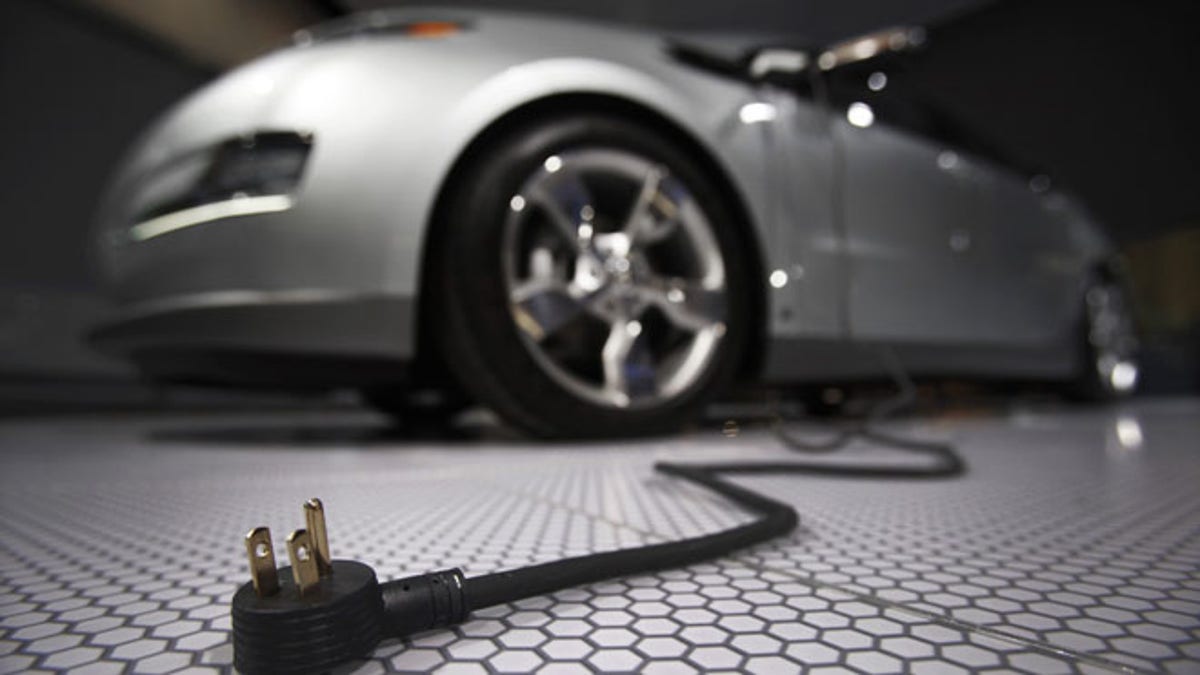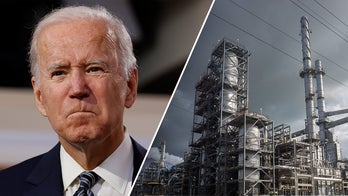
FILE: 2009: The Chevrolet Volt electric car during the North American International Auto Show in Detroit, Mich. (REUTERS)
The White House is proposing billions in additional tax incentives in fiscal 2015 for buyers of alternative-energy vehicles and others involved in the industry, according to a new Treasury Department report.
Among the biggest proposals is extending the 30 percent tax credit for Americans who invest in properties involved in advanced-energy products, including facilities that store energy for electric or hybrid-electric vehicles.
The government argues the $2.3 billion already allocated under the 2009 American Recovery and Reinvestment Act has resulted in roughly just one-third of eligible applicants receiving funding and that an additional $2.5 billion in credits should be authorized to meet the need.
A Treasury Department spokeswoman last week pointed to at least four major tax credits or incentives in the agency’s 297-page report.
President Obama since taking office in 2009 has made at top priority of helping U.S. companies involved in the production of “green” or alternative energy, largely to help reduce the country’s dependency on foreign oil.
Though Obama has said he backs an “all of the above” approach to domestic-energy production, he has faced sharp criticism for regulating the fossil fuel industry and most recently not approving the Keystone XL crude oil pipeline.
“While [Energy] Secretary Moniz touts the president’s ‘all of the above’ energy strategy, he is either ignorant of what the word ‘all’ means or he is being intentionally deceptive because the president’s plan is missing any promotion of conventional energy sources,” the Institute for Energy Research said last week.
Obama also has faced criticism for providing loan guarantees to companies in the alternative energy industry, including the California-based Solyndra. The solar panel maker received a guaranteed Energy Department loan, then went bankrupt in 2011 without repaying taxpayers roughly $500 million.
The others tax incentives included in the president’s 2015 proposal include increasing the maximum tax break for smaller alternative-energy vehicles, from $7,500 to $10,000. Obama’s proposal also calls for extending the credit beyond plug-in electric vehicles to include all advanced-technology vehicles and for providing more flexibility for the credit.
The seller or financier could, for example, offer the credit as a point-of-sale rebate to the buyer, under the proposal.
But the $10,000 break would not apply to luxury vehicles costing more than $45,000 -- including the Tesla Model S and the Cadillac ELR. The credit for those vehicles would be capped at $7,500, according to The Detroit News.
Another proposal is to extend tax credits on fuel-cell vehicles to those that run on such alternative fuels as hydrogen and liquefied natural gas.
The credit would go to manufactures, $25,000 for smaller vehicles and $40,00 of medium-sized ones, and could be transferred to a dealer or buyer.
The White House last year explained the reason for the higher tax credit by referencing Obama’s goal in 2008 “of putting 1 million advanced technology vehicles on the road by 2015.” This year, the Treasury Department dropped that language. In January, Moniz acknowledged that meeting that goal would be a “stretch” because sales haven’t met the government’s prior expectations, the Detroit News also reported.
The final of the four incentives would be extending the $1.01 a gallon tax credit for cellulosic biofuel that expired at the end of last year. The proposal would also make the credit retroactive.




